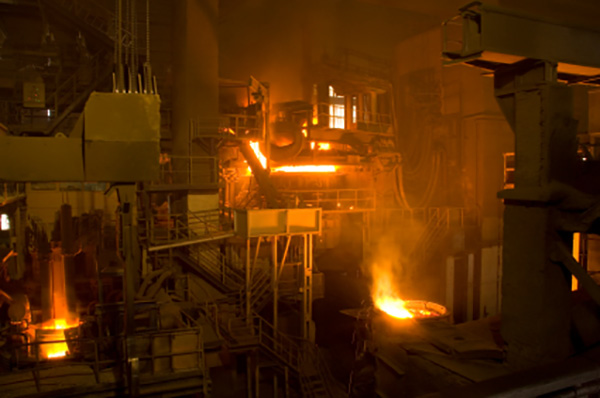Casting Processes
R&M Sales is highly experienced in the metal casting industry and can guide you to the best process for your production along with the most advantageous alloy.
The following are brief descriptions of the casting processes we routinely work with.

Permanent Mold - This casting process incorporates gravity fed pressure with rapid solidification to produce appealing aesthetics and functionality with high-volume production capabilities. Tooling is typically steel or iron. Permanent mold is ideal for:
- Complex shapes and designs
- High quality surface finish (due to finer grain structure)
- Large volume production
- Tighter dimensions
- Thin wall sections and details
Green Sand – This casting process uses sand, bentonite (or other suitable clay), water, and additional chemical additives to create a mixture that is known as “green sand.” This mixture is packed around a permanent tool (known as a pattern) and typically made of aluminum, the pattern is removed and metal is gravity fed into the sand cavities. Flask size available 14x19 and 20x24. Sand casting is ideal for:
- Low to high volume production
- Large weight range of ounces to hundreds of pounds
- Cost effectiveness
- Tolerance within +/- .03
- Surface finishes typically at 250 RMS
Shell Mold – This casting process is like green sand in that it uses a disposable mold. Instead of green sand, the mold is a thin-walled shell that is the result of applying sand and resin mixture around the heated pattern which is in the shape of the part and made from iron or steel. This process has a higher productivity rate and is capable of producing castings with better dimensional accuracy. Shell molding is ideal for:
- Higher productivity
- Low labor costs
- Tolerances within +/- .01
- Machining operations can be eliminated with the close tolerances cast
- Surface finishes typically at 75 RMS
Investment casting – (Lost wax) is generally used for small casting products with complicated shapes that would be costly or impossible to produce in other casting methods. A tool can be produced from wax, clay, wood, plastic or steel. A slurry mixture of wax, clay, or frozen mercury is used to produce a mold around the master tool which then hardens. The mold is assembled with parting lines and flash being removed. The ceramic mold (investment), is produced by coating the mold with a refractory material. Once cured, the wax is melted out or vaporized in a furnace or autoclave. After a second heating cycle to remove moisture and any residual wax, the mold is placed into a flask which is backfilled with sand. The pouring process can be gravity filled, or for areas difficult to reach, vacuum, tilt, or centrifugal process can be used. Investment molding is ideal for:
- Excellent surface finish (50 RMS)
- Dimensional accuracy of typically +/- .005
- Producing very intricate parts
- Producing almost any material
- Reducing finish work and defects, resulting in low labor costs
Lost Foam – Is similar to the investment molding process but used a polystyrene foam instead of was. A pre-heated aluminum tool is used to create a pattern which is then coated in a ceramic investment to control permeability. It is placed in a flask which backfilled and compacted with un-bonded sand. The foam which is comprised of 97.5% air and 2.5% polystyrene is burned out as the metal is poured. Lost Foam is ideal for:
- Creating complex parts without cores
- Dimensional accuracies (+/- .005-.010)
- Excellent surface finish (125 RMS)
- Eliminating draft requirements
- Reducing finish work and defects, resulting in low labor costs.
No Bake – Is a molding process where chemically bonded sand is mold to each half of the pattern (the cope side & drag side). Once hardened it is removed and coated with a refractory material, then assembled. This process is good for low to medium volume products. Some of the benefits are:
- Good dimensional tolerances +/- .005-.015
- Good surface finish
- Intricate design feature capabilities
- Minimal draft and radii requirements
- Low susceptibility to gas porosity

